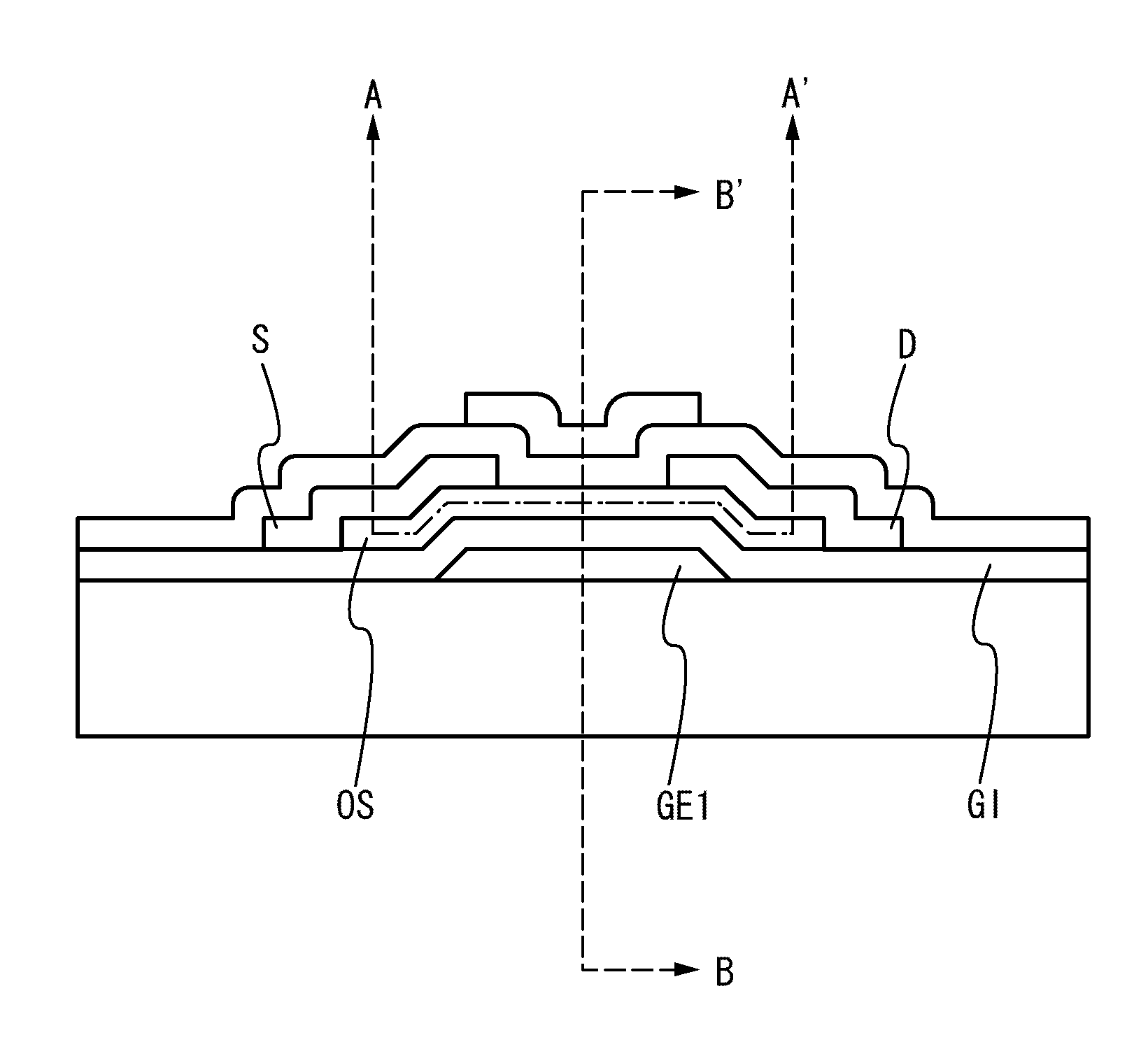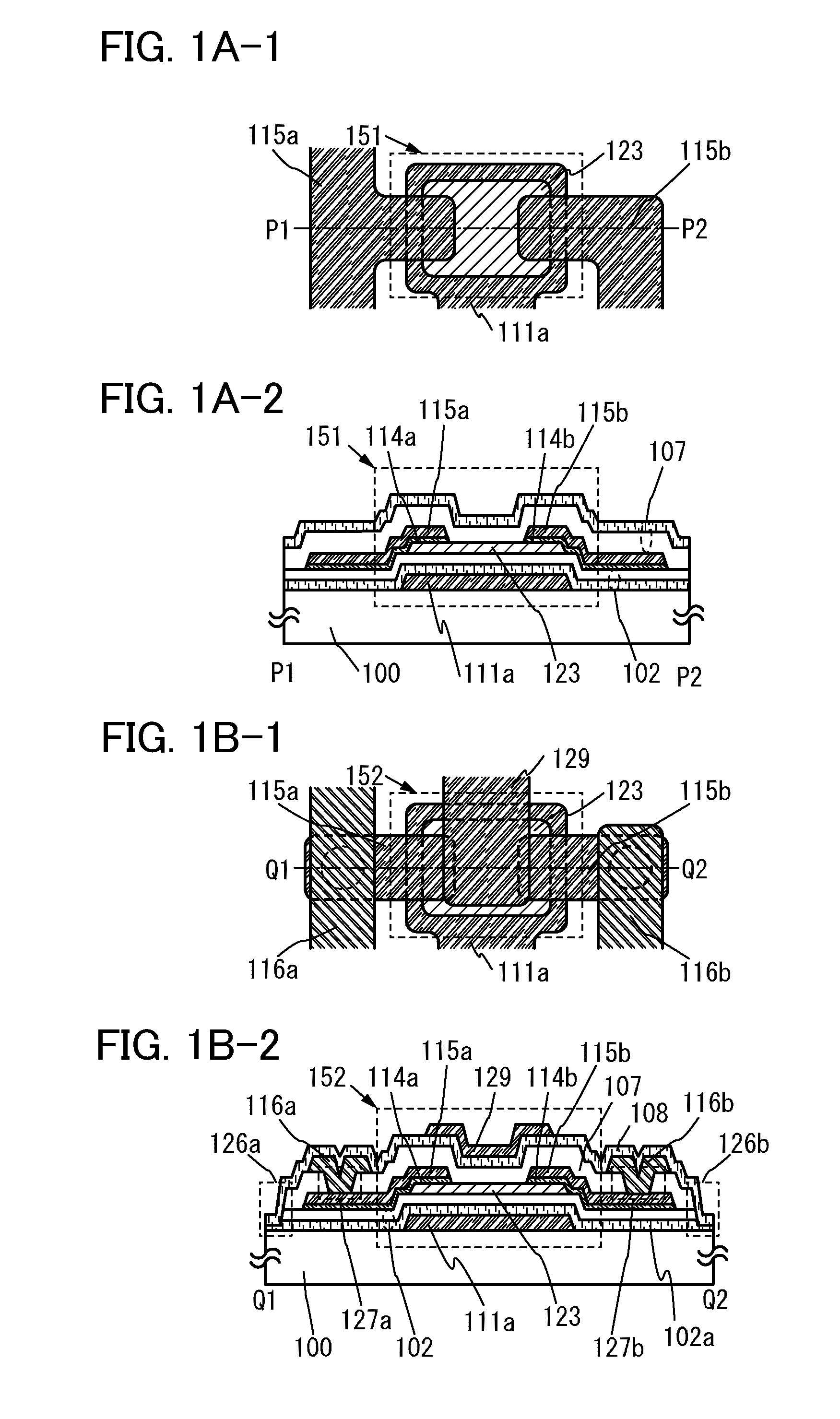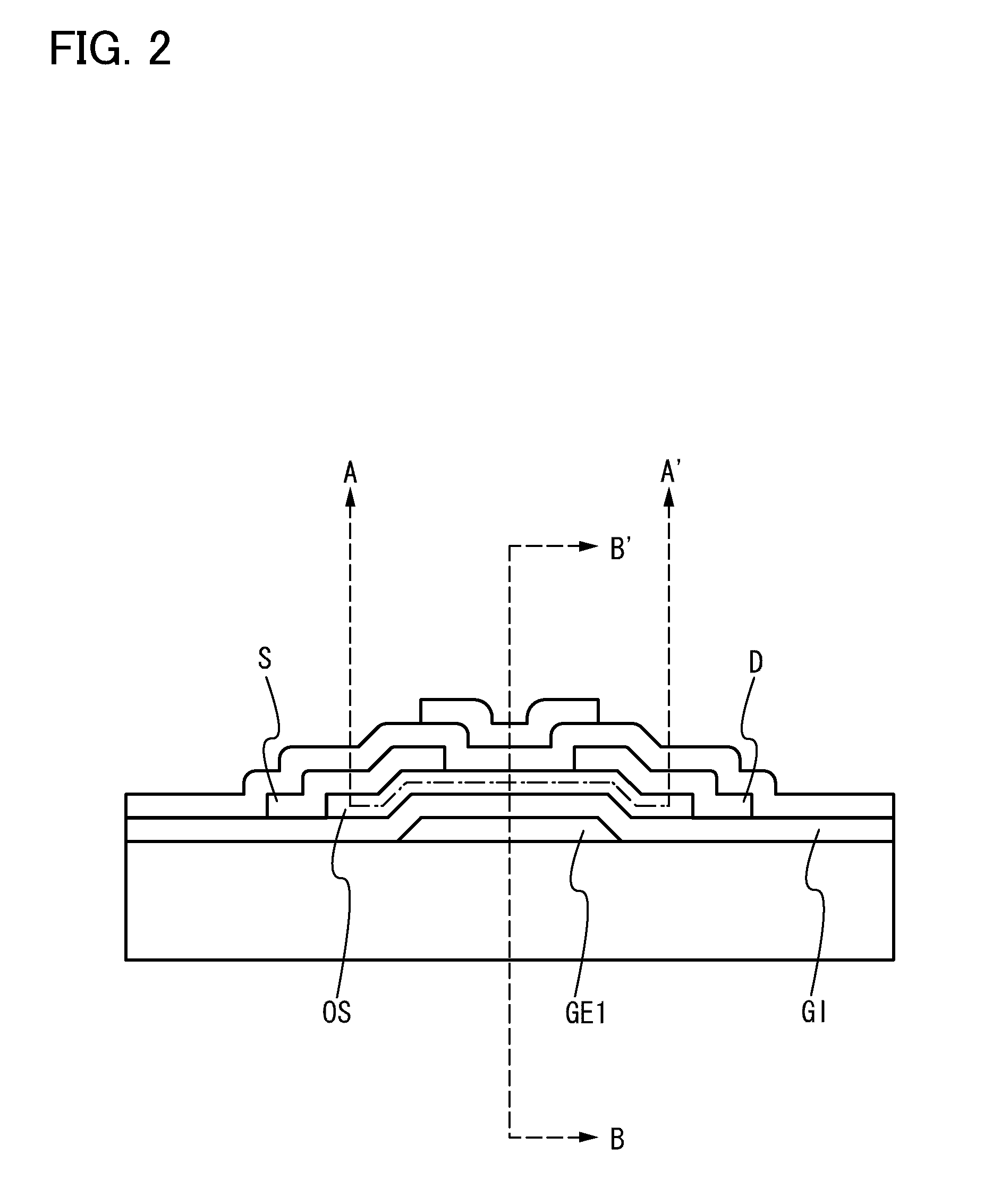Semiconductor device and manufacturing method thereof
a technology of semiconductor devices and manufacturing methods, applied in the direction of semiconductor devices, basic electric elements, electrical appliances, etc., can solve the problems of power consumption suppression, so-called aperture ratio reduction, etc., and achieve the effect of small loss of current, small off current, and high reliability
- Summary
- Abstract
- Description
- Claims
- Application Information
AI Technical Summary
Benefits of technology
Problems solved by technology
Method used
Image
Examples
embodiment 1
[0072]In this embodiment, a bottom-gate transistor which transmits visible light will be described as an embodiment of a semiconductor device with reference to FIGS. 1A-1, 1A-2, 1B-1, and 1B-2.
[0073]FIGS. 1A-1 and 1A-2 illustrate an example in which an electrode of a transistor and a wiring connected to the transistor are formed using light-transmitting conductive films.
[0074]FIGS. 1B-1 and 1B-2 illustrate an example in which an electrode of a transistor is formed using a light-transmitting conductive film and a wiring connected to the transistor is formed using a conductive film containing metal.
[0075]FIGS. 1A-1 and 1A-2 illustrate an embodiment of a structure of a bottom-gate transistor which transmits visible light. FIG. 1A-1 is a top plan view illustrating a plane structure of the transistor, and FIG. 1A-2 is a cross-sectional view illustrating a layered structure of the transistor. Note that a dashed-dotted line P1-P2 in FIG. 1A-1 corresponds to a cross section P1-P2 in FIG. 1A...
embodiment 2
[0141]In this embodiment, a display device for which a bottom-gate transistor which transmits visible light is used will be described as an embodiment of a semiconductor device with reference to FIGS. 6A and 6B. In addition, a method for manufacturing the bottom-gate transistor which transmits visible light will be described with reference to FIGS. 7A to 7D.
[0142]A method for manufacturing a channel-protective transistor which can be formed together with the bottom-gate transistor which transmits visible light will also be described with reference to FIGS. 7A to 7D.
[0143]FIG. 6A is a top plan view illustrating a pixel portion of a display device for which a bottom-gate transistor which transmits visible light is used. FIG. 6B is a cross-sectional view illustrating a layered structure of the pixel portion of the display device for which a bottom-gate transistor which transmits visible light is used. Note that a dashed-dotted line A1-A2 in FIG. 6A corresponds to a cross section A1-A2 ...
embodiment 3
[0236]In this embodiment, an example of a structure of a terminal portion provided over a substrate over which a semiconductor device is provided is illustrated in FIGS. 8A-1, 8A-2, 8B-1, and 8B-2. Note that in FIGS. 8A-1, 8A-2, 8B-1, and 8B-2, the portions which are the same as those in FIGS. 1A-1, 1A-2, 1B-1, and 1B-2 are denoted by common reference numerals.
[0237]FIGS. 8A-1 and 8A-2 illustrate a top plan view and a cross-sectional view of a terminal portion of a gate wiring, respectively. FIG. 8A-1 corresponds to a cross-sectional view along j-k in FIG. 8A-2.
[0238]In FIG. 8A-1, a first terminal 411 is a connection terminal functioning as an input terminal. As for the first terminal 411, a conductive layer 111e formed of the same material as the gate wiring and a conductive layer 115e formed of the same material as a second conductive layer are stacked with a barrier layer 114e therebetween. Although not illustrated in the drawing, the conductive layer 111e is electrically connect...
PUM
 Login to View More
Login to View More Abstract
Description
Claims
Application Information
 Login to View More
Login to View More - R&D
- Intellectual Property
- Life Sciences
- Materials
- Tech Scout
- Unparalleled Data Quality
- Higher Quality Content
- 60% Fewer Hallucinations
Browse by: Latest US Patents, China's latest patents, Technical Efficacy Thesaurus, Application Domain, Technology Topic, Popular Technical Reports.
© 2025 PatSnap. All rights reserved.Legal|Privacy policy|Modern Slavery Act Transparency Statement|Sitemap|About US| Contact US: help@patsnap.com



